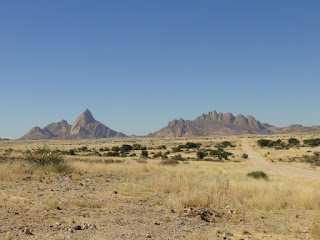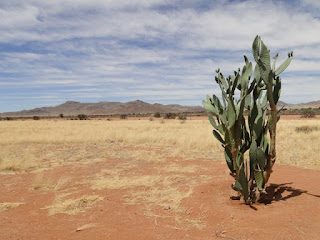Ferry used to cross Okavango River in Botswana (similar to the one mentioned in this post).
Fortunately, we had had an early start (6:30am) to try to beat the crowds… and it worked. Lickety split we were through Botswanan customs, waited 20-minutes for a ferry for us ,twenty schoolchildren, the Intrepidmobile, and two other cars to board, and we were on the other side in Zambia. Once through immigration, Carissa and I got to see what would become the one souvenir we would most frequently be solicited to buy—Zimbabwean currency. The largest note, One Hundred Trillion dollars, was practically worth nothing even when in use, but since Zimbabwe has abandoned their own currency in favor of the US dollar it has become a popular souvenir (or so the masses of men selling these bills on the street would like you to think).
We followed the Chobe River as it became the ‘mighty Zambezi’ and on to Livingstone, Zambia, where we camped near Victoria Falls. The river and falls separate Zambia from Zimbabwe and unfortunately Zambia gets the short end of the stick. The waterfalls on the Zambian side only flow powerfully in the height of the rainy season and wane between rainstorms. We visited the Zambian side on our arrival. It had been raining for the previous 3 days so the falls looked magnificent (though still a dry season flow).
Rich and Carissa at Victoria Falls (Zambia side).
Victoria Falls (from Zambia).
Us just above where the Zambezi plummets over the falls in Zambia.
Magnificent Victoria Falls.
Devil's cataract (a portion of Vic Falls) on the Zimbabwe side.
Rich swinging from a very strong vine in Vic Falls NP, Zimbabwe.
Carissa and the massive Vic Falls (Zimbabwe side).
Rich just above the Boiling Point on the Zimbabwe side (with the much smaller Zambian falls in the background).
Since Zimbabwe’s tourism has declined in recent years, Livingstone, Zambia has taken on the mantle of Victoria Falls’ main town (replacing Zimbabwe’s Victoria Falls town as the tourist hub). Livingstone is 11-kilometers from the falls and less convenient than the town of Victoria Falls in Zimbabwe which basically overlooks the river. We stayed there in Livingstone for two days after we parted ways from our Interpidmobile friends. Passing up the opportunities to go river rafting or bungee jumping, we instead spent our time looking around the markets and managed to catch a Saturday morning anti-domestic and child abuse rally. Interspersed with dancing, there were speeches and educational skits to hammer home the point.
Our accommodation was a backpackers hostel named Jolly Boys. We’d describe it as a budget resort as it was the nicest hostel at which either of us has ever stayed. It had a friendly staff, great facilities including a pool and bar, and on Saturday night had a traditional drumming and dance show outside the kitchen where we prepared our dinner. Very fancy.
Indeed we’ve cut the apron strings with the Intrepidmobile and are traveling on our own using public transit. We’ll see how this compares...





















































